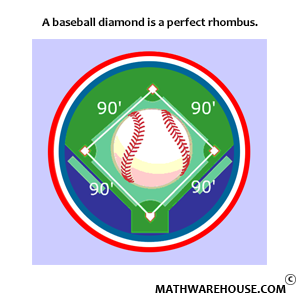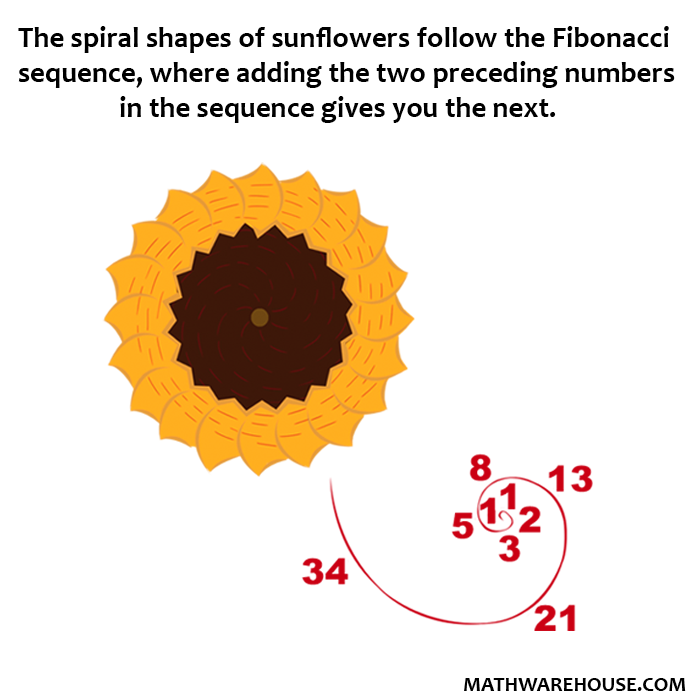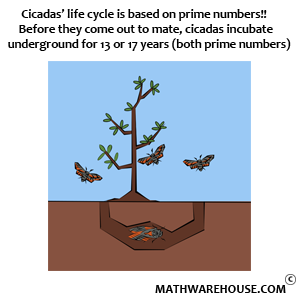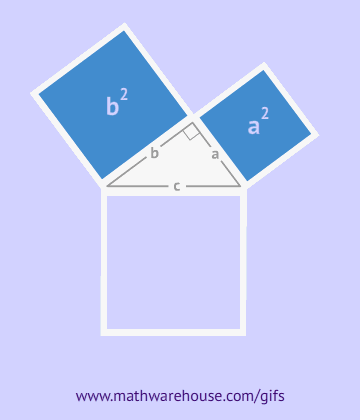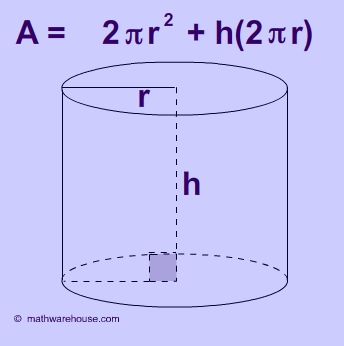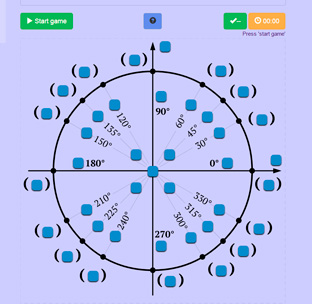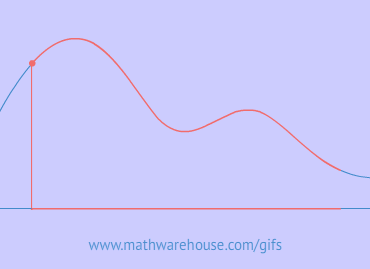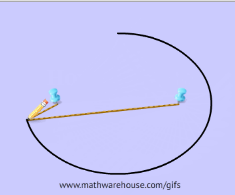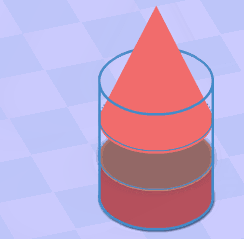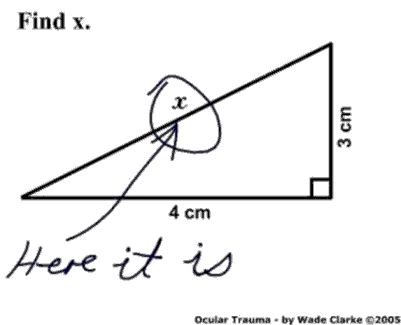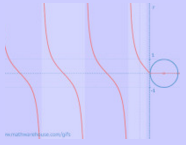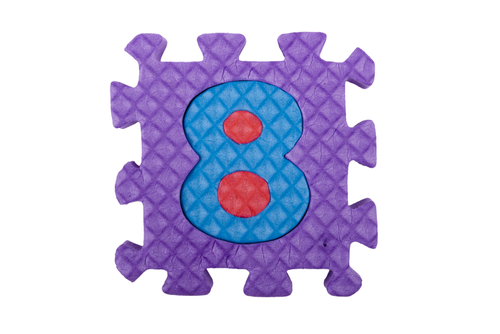Quick Overview
- $$\displaystyle \lim_{\theta\to0} \frac{1-\cos \theta}\theta = 0$$
- The denominator must be the same as the argument of the cosine, and both must be going to zero in the limit.
- When needed, multiply by the conjugate $$1+\cos \theta$$ and use the Pythagorean Identity (see Examples 3 and 4).
- The cosine forms are often combined with sine forms (so be sure to study those first).
Derivation of the Basic Limit
Show that $$\displaystyle \lim_{\theta\to0} \frac{1-\cos \theta}\theta = 0$$
Multiply by the conjugate of the numerator.
$$ \begin{align*} \lim_{\theta\to0}\,\frac{1-\cos \theta}\theta & = \lim_{\theta\to0}\,\frac{1-\cos \theta}\theta \cdot \blue{\frac{1+\cos \theta}{1+\cos \theta}}\\[6pt] & = \lim_{\theta\to0}\,\frac{\blue{1-\cos^2 \theta}}{\theta(1+\cos \theta)} \end{align*} $$
Use Pythagorean Identity .
$$ \displaystyle\lim_{\theta\to0}\,\frac{\blue{1-\cos^2 \theta}}{\theta(1+\cos \theta)} = \displaystyle\lim_{\theta\to0}\,\frac{\blue{\sin^2 \theta}}{\theta(1+\cos \theta)} $$
Rewrite to isolate a $$\frac{\sin \theta} \theta$$. Then evaluate the limit .
$$ \begin{align*} \lim_{\theta\to0}\,\frac{\red{\sin^2 \theta}}{\red \theta(1+\cos \theta)} & = \lim_{\theta\to0}\left(\red{\frac{\sin \theta} \theta} \cdot \frac{\red{\sin \theta}}{1+\cos \theta}\right)\\[6pt] & = (\red 1) \cdot \frac{\red{\sin 0}}{1+\cos 0}\\[6pt] & = \frac 0 2\\[6pt] & = 0 \end{align*} $$
We have shown that
$$\displaystyle \lim_{\theta\to0} \frac{1-\cos \theta}\theta = 0$$
Examples
Example 1
Evaluate: $$\displaystyle \lim_{x\to0}\, \frac{1 - \cos 4x}{x}$$
Multiply by $$\frac 4 4$$
$$ \\ \begin{align*} \lim_{x\to0}\, \frac{1 - \cos 4x}{x} % & = \lim_{x\to0}\left(% \blue{\frac 4 4}\cdot \frac{1 - \cos 4x}{x} \right)\\[6pt] % & = \lim_{x\to0}\left(% \frac{\blue 4} 1\cdot \frac{1 - \cos 4x}{\blue 4 x} \right)\\[6pt] % & = \blue{4}\cdot\lim_{x\to0}\,\frac{1 - \cos 4x}{4 x} \end{align*} \\ $$
Evaluate the limit .
$$ 4\cdot\red{\displaystyle\lim_{x\to0}\,\frac{1 - \cos 4x}{4 x}} % = 4(\red 0) % = 0 $$
$$\displaystyle \lim_{x\to0}\, \frac{1 - \cos 4x}{x} = 0$$
Example 2
Evaluate: $$\displaystyle \lim_{x\to0}\, \frac{1-\cos 2x}{\sin 3x}$$
Rewrite the numerator and denominator as separate fractions.
$$ \displaystyle\lim_{x\to0}\, \frac{1-\cos 2x}{\sin 3x} % = \displaystyle\lim_{x\to0} \left(% \frac{1-\cos 2x} 1 \cdot% \frac 1 {\sin 3x}% \right) $$
Multiply by $$\frac{2x}{2x}$$ and $$\frac{3x}{3x}$$
$$ \begin{align*} \lim_{x\to0} \left(% \frac{1-\cos 2x} 1 \cdot \frac 1 {\sin 3x} \right) % & = \lim_{x\to0} \left(% \blue{\frac{2x}{2x}}\cdot \frac{1-\cos 2x} 1 \cdot \red{\frac{3x}{3x}}\cdot \frac 1 {\sin 3x} \right)\\[6pt] % & = \lim_{x\to0} \left(% \frac{\blue{2x}} 1\cdot \frac{1-\cos 2x}{\blue{2x}}\cdot \frac{1}{\red{3x}}\cdot \frac{\red{3x}}{\sin 3x} \right) \end{align*} $$
Simplify the non-trigonometric fractions.
$$ \begin{align*} \lim_{x\to0} \left(% \blue{\frac{2x} 1}\cdot \frac{1-\cos 2x}{2x}\cdot \red{\frac{1}{3x}}\cdot \frac{3x}{\sin 3x} \right) % & = \lim_{x\to0} \left(% \frac{\blue{2x}}{\red{3x}}\cdot \frac{1-\cos 2x}{2x}\cdot \frac{3x}{\sin 3x} \right)\\[6pt] % & = \lim_{x\to0} \left(% \frac{\blue 2}{\red 3}\cdot \frac{1-\cos 2x}{2x}\cdot \frac{3x}{\sin 3x} \right)\\[6pt] % & = \frac{\blue 2}{\red 3}\cdot\lim_{x\to0}\left(% \frac{1-\cos 2x}{2x}\cdot \frac{3x}{\sin 3x} \right) \end{align*} $$
Evaluate the limit of each factor.
$$ \begin{align*}% \frac 2 3\cdot\lim_{x\to0}\left(% \blue{\frac{1-\cos 2x}{2x}}\cdot \red{\frac{3x}{\sin 3x}} \right) % & =\frac 2 3\,\left(% \blue{\lim_{x\to0}\,\frac{1-\cos 2x}{2x}} \right) % \left(% \red{\lim_{x\to0}\,\frac{3x}{\sin 3x}} \right)\\[6pt] % & = \frac 2 3(\blue 0)(\red 1)\\[6pt] % & = 0 \end{align*} $$
$$\\ \displaystyle \lim_{x\to0}\, \frac{1-\cos 2x}{\sin 3x} = 0 \\$$
Example 3
Evaluate: $$\displaystyle \lim_{x\to0} \frac{\sin^2 3x}{1-\cos 2x}$$
Multiply by the conjugate of the denominator.
$$ \begin{align*} \lim_{x\to0} \frac{\sin^2 3x }{1-\cos 2x} % & = \lim_{x\to0}\left(% \frac{\sin^2 3x}{1-\cos 2x }\cdot \blue{\frac{1+\cos 2x}{1+\cos 2x}} \right)\\[6pt] % & = \lim_{x\to0}\left(% \frac{\sin^2 3x}{\blue{1-\cos^2 2x}}\cdot \frac{\blue{1+\cos 2x}} 1 \right) \end{align*} $$
Use Pythagorean Identity to convert the denominator to sines.
$$ \displaystyle\lim_{x\to0}\left(% \frac{\sin^2 3x}{\blue{1-\cos^2 2x}}\cdot \frac{1+\cos 2x} 1 \right) % = \displaystyle\lim_{x\to0} \left(% \frac{\sin^2 3x}{\blue{\sin^2 2x}}\cdot \frac{1+\cos 2x} 1 \right) $$
Separate each term into its own fraction.
$$ \displaystyle\lim_{x\to0} \left(% \frac{\red{\sin^2 3x}}{\blue{\sin^2 2x}}\cdot \frac{1+\cos 2x} 1 \right) % = \displaystyle\lim_{x\to0}\left(% \red{\frac{\sin 3x} 1} \cdot \red{\frac{\sin 3x} 1} \cdot \blue{\frac 1 {\sin 2x}} \cdot \blue{\frac 1 {\sin 2x}} \cdot \frac{1+\cos 2x} 1 \right) $$
For each fraction with a sine function, multiply by $$\frac{2x}{2x}$$ or $$\frac{3x}{3x}$$ as appropriate.
$$ \begin{align*} & \lim_{x\to0}\left(% \frac{\sin 3x } 1 \cdot \frac{\sin 3x} 1 \cdot \frac 1 {\sin 2x} \cdot \frac 1 {\sin 2x } \cdot \frac{1+\cos 2x} 1 \right)\\[6pt] % & = \lim_{x\to0}\left(% \blue{\frac{3x}{3x}}\cdot\frac{\sin 3x} 1 \cdot \blue{\frac{3x}{3x}}\cdot\frac{\sin 3x} 1 \cdot \red{\frac{2x}{2x}}\cdot\frac 1 {\sin 2x} \cdot \red{\frac{2x}{2x}}\cdot\frac 1 {\sin 2x} \cdot \frac{1+\cos 2x} 1 \right)\\[6pt] % & = \lim_{x\to0}\left(% \frac{\blue{3x}} 1 \cdot\frac{\sin 3x}{\blue{3x}}\cdot \frac{\blue{3x}} 1 \cdot\frac{\sin 3x}{\blue{3x}} \cdot \frac 1 {\red{2x}} \cdot\frac{\red{2x}}{\sin 2x} \cdot \frac 1 {\red{2x}} \cdot\frac{\red{2x}}{\sin 2x} \cdot \frac{1+\cos 2x} 1 \right) \end{align*} $$
Simplify the non-trigonometric fractions.
$$ \begin{align*} & \quad\lim_{x\to0}\left(% \blue{\frac{3x} 1} \cdot\frac{\sin 3x}{3x}\cdot \blue{\frac{3x} 1} \cdot\frac{\sin 3x}{3x} \cdot \red{\frac 1 {2x}} \cdot\frac{2x}{\sin 2x} \cdot \red{\frac 1 {2x}} \cdot\frac{2x}{\sin 2x} \cdot \frac{1+\cos 2x} 1 \right)\\[6pt] % & = \lim_{x\to0}\left(% \blue{\frac{3x} 1} \cdot \blue{\frac{3x} 1} \cdot \red{\frac 1 {2x}} \cdot \red{\frac 1 {2x}} \cdot \frac{\sin 3x}{3x}\cdot \frac{\sin 3x}{3x} \cdot \frac{2x}{\sin 2x} \cdot \frac{2x}{\sin 2x} \cdot \frac{1+\cos 2x} 1 \right)\\[6pt] % & = \lim_{x\to0}\left(% \frac{\blue{9x^2}}{\red{4x^2}} \cdot \frac{\sin 3x}{3x}\cdot \frac{\sin 3x}{3x} \cdot \frac{2x}{\sin 2x} \cdot \frac{2x}{\sin 2x} \cdot \frac{1+\cos 2x} 1 \right)\\[6pt] % & = \lim_{x\to0}\left(% \frac{\blue{9}}{\red{4}} \cdot \frac{\sin 3x}{3x}\cdot \frac{\sin 3x}{3x} \cdot \frac{2x}{\sin 2x} \cdot \frac{2x}{\sin 2x} \cdot \frac{1+\cos 2x} 1 \right)\\[6pt] % & = \frac{\blue{9}}{\red{4}}\cdot\lim_{x\to0}\left(% \frac{\sin 3x}{3x}\cdot \frac{\sin 3x}{3x} \cdot \frac{2x}{\sin 2x} \cdot \frac{2x}{\sin 2x} \cdot \frac{1+\cos 2x} 1 \right) \end{align*} $$
Evaluate the limit of each factor.
$$ \\ \begin{align*} & \frac 9 4\cdot\lim_{x\to0}\left(% \blue{\frac{\sin 3x}{3x}}\cdot \blue{\frac{\sin 3x}{3x}} \cdot \red{\frac{2x}{\sin 2x}} \cdot \red{\frac{2x}{\sin 2x}} \cdot \frac{1+\cos 2x} 1 \right)\\[6pt] % & = \frac 9 4(\blue 1)(\blue 1)(\red 1)(\red 1)(1 + \cos 0)\\[6pt] % & = \frac 9 4 \cdot 2\\[6pt] % & = \frac 9 2 \end{align*} \\ $$
$$\displaystyle \lim_{x\to0}\, \frac{\sin^2 3x}{1-\cos 2x} = \frac 9 2$$
Example 4
Evaluate: $$\displaystyle\lim_{x\to0}\,\frac{1-\cos x}{\cos 6x -1}$$
Write the numerator and denominator in separate fractions.
$$ \displaystyle\lim_{x\to0}\,\frac{1-\cos x}{\cos 6x -1} % = \displaystyle\lim_{x\to0}\left(% \frac{1-\cos x} 1 \cdot \frac 1 {\cos 6x -1} \right) $$
For each fraction, use the conjugate to get a difference of squares.
$$ \begin{align*} \lim_{x\to0}\,\left(\frac{1-\cos x} 1 \cdot \frac 1 {\cos 6x -1}\right) % & = \lim_{x\to0}\left(% \frac{1-\cos x} 1\cdot \frac{\blue{1+\cos x}}{\blue{1+\cos x}}\cdot \frac 1 {\cos 6x -1}\cdot \frac{\red{\cos 6x + 1}}{\red{\cos 6x + 1}} \right)\\[6pt] % & \lim_{x\to0}\left(% \frac{\blue{1-\cos^2 x}}{1+\cos x}\cdot \frac{\cos 6x + 1}{\red{\cos^2 6x -1}} \right) \end{align*} $$
Use Pythagorean Identity to change the difference of squares into sines.
$$ \begin{align*}% \lim_{x\to0}\left(% \frac{\blue{1-\cos^2 x}}{1+\cos x}\cdot \frac{\cos 6x + 1}{\red{\cos^2 6x -1}} \right) % & = \lim_{x\to0}\left(% \frac{\blue{\sin^2 x}}{1+\cos x}\cdot \frac{\cos 6x + 1}{\red{-\sin^2 6x}} \right)\\[6pt] % & = \red{-1}\cdot\lim_{x\to0}\left(% \frac{\sin^2 x}{1+\cos x}\cdot \frac{\cos 6x + 1}{\sin^2 6x} \right) \end{align*} $$
Separate the sines into their own fractions.
$$ \begin{align*}% &\quad-1\cdot\lim_{x\to0}\left(% \frac{\blue{\sin^2 x}}{1+\cos x}\cdot \frac{\cos 6x + 1}{\red{\sin^2 6x}} \right)\\[6pt] % & = -1\cdot\lim_{x\to0}\left(% \blue{\frac{\sin x} 1} \cdot \blue{\frac{\sin x} 1} \cdot \red{\frac 1 {\sin 6x}} \cdot \red{\frac 1 {\sin 6x}} \cdot \frac{\cos 6x +1}{1+\cos x} \right) \end{align*} $$
Multiply each of the sine fractions by $$\frac x x$$ or $$\frac{6x}{6x}$$ as appropriate.
$$ \begin{align*} & -1\cdot\lim_{x\to0}\left(% \frac{\sin x} 1 \cdot \frac{\sin x} 1 \cdot \frac 1 {\sin 6x} \cdot \frac 1 {\sin 6x} \cdot \frac{\cos 6x +1}{1+\cos x} \right)\\[6pt] % & = -1\cdot\lim_{x\to0}\left(% \blue{\frac x x}\cdot \frac{\sin x} 1 \cdot \blue{\frac x x}\cdot \frac{\sin x} 1 \cdot \red{\frac{6x}{6x}}\cdot\frac 1 {\sin 6x} \cdot \red{\frac{6x}{6x}}\cdot\frac 1 {\sin 6x} \cdot \frac{\cos 6x +1}{1+\cos x} \right)\\[6pt] % & = -1\cdot\lim_{x\to0}\left(% \frac{\blue x} 1\cdot \frac{\sin x}{\blue x} \cdot \frac{\blue x} 1\cdot \frac{\sin x}{\blue x} \cdot \frac 1 {\red {6x}}\cdot\frac{\red{6x}}{\sin 6x} \cdot \frac 1 {\red {6x}}\cdot\frac{\red{6x}}{\sin 6x} \cdot \frac{\cos 6x +1}{1+\cos x} \right) \end{align*} $$
Simplify the non-trigonometric fractions.
$$ \\ \begin{align*} & -1\cdot\lim_{x\to0}\left(% \blue{\frac x 1}\cdot \frac{\sin x} x \cdot \blue{\frac x 1}\cdot \frac{\sin x} x \cdot \red{\frac 1 {6x}}\cdot\frac{6x}{\sin 6x} \cdot \red{\frac 1 {6x}}\cdot\frac{6x}{\sin 6x} \cdot \frac{\cos 6x +1}{1+\cos x} \right)\\[6pt] % & = -1\cdot\lim_{x\to0}\left(% \blue{\frac x 1}\cdot \blue{\frac x 1}\cdot \red{\frac 1 {6x}}\cdot\red{\frac 1 {6x}}\cdot \frac{\sin x} x \cdot \frac{\sin x} x \cdot \frac{6x}{\sin 6x} \cdot \frac{6x}{\sin 6x} \cdot \frac{\cos 6x +1}{1+\cos x} \right)\\[6pt] % & = -1\cdot\lim_{x\to0}\left(% \frac{\blue{x^2}}{\red{36x^2}}\cdot \frac{\sin x} x \cdot \frac{\sin x} x \cdot \frac{6x}{\sin 6x} \cdot \frac{6x}{\sin 6x} \cdot \frac{\cos 6x +1}{1+\cos x} \right)\\[6pt] % & = -1\cdot\lim_{x\to0}\left(% \frac{\blue{1}}{\red{36}}\cdot \frac{\sin x} x \cdot \frac{\sin x} x \cdot \frac{6x}{\sin 6x} \cdot \frac{6x}{\sin 6x} \cdot \frac{\cos 6x +1}{1+\cos x} \right)\\[6pt] % & = -\frac{\blue{1}}{\red{36}}\cdot\lim_{x\to0}\left(% \frac{\sin x} x \cdot \frac{\sin x} x \cdot \frac{6x}{\sin 6x} \cdot \frac{6x}{\sin 6x} \cdot \frac{\cos 6x +1}{1+\cos x} \right) \end{align*} \\ $$
Evaluate the limit of each factor.
$$ \\ \begin{align*} & -\frac 1{36}\cdot\lim_{x\to0}\left( \blue{\frac{\sin x} x} \cdot \blue{\frac{\sin x} x} \cdot \red{\frac{6x}{\sin 6x}} \cdot \red{\frac{6x}{\sin 6x}} \cdot \frac{\cos 6x +1}{1+\cos x} \right)\\[6pt] % & = -\frac 1 {36} (\blue 1)(\blue 1)(\red 1)(\red 1)\left(\frac{\cos 0 +1}{1 + \cos 0}\right)\\[6pt] % & = -\frac 1 {36}\left(\frac 2 2\right)\\[6pt] % & = -\frac 1 {36} \end{align*} \\ $$
$$\displaystyle\lim_{x\to0}\,\frac{1-\cos x}{\cos 6x -1} = -\frac 1 {36}$$
Practice Problems
Factor out the 2 from the denominator and multiply by $$\frac 7 7$$.
$$ \begin{align*} \lim_{x\to0}\, \frac{1-\cos 7x}{\blue 2 x} % & = \lim_{x\to0}\left(% \frac 1 {\blue 2}\cdot \frac{1-\cos 7x}{x} \right)\\[6pt] % & = \frac 1 {\blue 2}\cdot\lim_{x\to0} \left(% \red{\frac 7 7}\cdot \frac{1-\cos 7x}{x} \right)\\[6pt] % & = \frac 1 2\cdot\lim_{x\to0}\left(% \frac{\red 7} 1\cdot \frac{1-\cos 7x}{\red 7 x} \right)\\[6pt] % & = \frac{\red 7} 2\cdot\lim_{x\to0}\,\frac{1-\cos 7x}{\red 7 x} \end{align*} $$
Evaluate the limit .
$$ \frac 7 2\cdot\blue{\displaystyle\lim_{x\to0} \, \frac{1-\cos 7x}{7x}} % = \frac 7 2 (\blue 0) % = 0 $$
$$\displaystyle \lim_{x\to0}\, \frac{1-\cos 7x}{2x} = 0$$.
Factor out a negative 1 from the numerator and the 4 from the denominator.
$$ \begin{align*}% \lim_{x\to0}\,\frac{\cos 3x - 1}{4x} % & = \lim_{x\to0}\,\frac{\blue{-1}(1 - \cos 3x)}{\red 4 x}\\[6pt] % & = \lim_{x\to0}\,\left(% \blue{-\frac 1 {\red 4}} \cdot \frac{1 - \cos 3x}{x} \right)\\[6pt] % & = \blue{-\frac 1 {\red 4}} \cdot\lim_{x\to0}\,\frac{1-\cos 3x} x \end{align*} $$
Multiply by $$\frac 3 3$$.
$$ \begin{align*} -\frac 1 4 \cdot\lim_{x\to0}\,\frac{1-\cos 3x} x % & = -\frac 1 4 \cdot\lim_{x\to0}\left(% \frac{\blue 3}{\blue 3}\cdot \frac{1-\cos 3x} x \right)\\[6pt] % & = -\frac 1 4 \cdot\lim_{x\to0}\left(% \frac{\blue 3} 1\cdot \frac{1-\cos 3x}{\blue 3 x} \right)\\[6pt] % & = -\frac{\blue 3} 4 \cdot\lim_{x\to0}\, \frac{1-\cos 3x}{\blue 3 x} \end{align*} $$
Evaluate the limit .
$$ -\frac 3 4 \cdot\blue{\displaystyle\lim_{x\to0}\, \frac{1-\cos 3x}{3 x}} % = -\frac 3 4 (\blue 0) % = 0 $$
$$\displaystyle \lim_{x\to0}\,\frac{\cos 3x - 1}{4x} = 0$$.
Factor the 8 out of the numerator.
$$ \displaystyle\lim_{x\to0}\,\frac{\blue 8 x}{1-\cos x} % = \blue 8\cdot \displaystyle\lim_{x\to0}\,\frac{x}{1-\cos x} $$
Multiply by the conjugate of the denominator to get a difference of squares.
$$ \begin{align*} 8\cdot \lim_{x\to0}\,\frac{x}{1-\cos x} % & = 8\cdot \lim_{x\to0}\left(% \frac{x}{1-\cos x} \cdot \blue{\frac{1+\cos x}{1+\cos x}} \right)\\[6pt] % & = 8\cdot \lim_{x\to0}\left(% \frac{x}{\blue{1-\cos^2 x}}\cdot \frac{\blue{1+\cos x}} 1 \right) \end{align*} $$
Use Pythagorean Identity to convert the denominator to sines.
$$ 8\cdot \displaystyle\lim_{x\to0}\left(% \frac{x}{\blue{1-\cos^2 x}}\cdot \frac{1+\cos x} 1 \right) % = 8\cdot \displaystyle\lim_{x\to0}\left(% \frac{x}{\blue{\sin^2 x}}\cdot \frac{1+\cos x} 1 \right) $$
Separate into the sine functions.
$$ 8\cdot \displaystyle\lim_{x\to0}\left(% \frac{x}{\blue{\sin^2 x}}\cdot \frac{1+\cos x} 1 \right) % = 8\cdot \displaystyle\lim_{x\to0}\left(% \frac x {\blue{\sin x}} \cdot \frac{1+\cos x}{\blue{\sin x}} \right) $$
Evaluate the limit of each factor.
$$ 8\cdot \displaystyle\lim_{x\to0}\left(% \blue{\frac x {\sin x}} \cdot \red{\frac{1+\cos x}{\sin x}} \right) % = 8 (\blue 1)\left(\red{\frac 2 0}\right) % = \frac{16} 0\qquad \mbox{Division by zero!} $$
$$\displaystyle \lim_{x\to0}\,\frac{8x}{1-\cos x}$$ does not exist.
Multiply by the conjugate of the denominator to get a difference of squares.
$$ \begin{align*} \lim_{x\to0}\,\frac{x^2}{1-\cos 12x} % & = \lim_{x\to0}\left(% \frac{x^2}{1-\cos 12x}\cdot \blue{\frac{1+\cos 12x}{1+\cos 12x}} \right)\\[6pt] % & = \lim_{x\to0}\left(% \frac{x^2}{\blue{1-\cos^2 12x}}\cdot \frac{\blue{1+\cos 12x}} 1 \right) \end{align*} $$
Use Pythagorean Identity to convert the denominator into sines.
$$ \displaystyle\lim_{x\to0}\left(% \frac{x^2}{\blue{1-\cos^2 12x}}\cdot \frac{1+\cos 12x} 1 \right) % = \displaystyle\lim_{x\to0}\left(% \frac{x^2}{\blue{\sin^2 12x}}\cdot \frac{1+\cos 12x} 1 \right) $$
Rewrite as separate fractions.
$$ \displaystyle\lim_{x\to0}\left(% \frac{x^2}{\sin^2 12x}\cdot \frac{1+\cos 12x} 1 \right) % = \displaystyle\lim_{x\to0}\left(% \frac x {\sin 12x} \cdot \frac x {\sin 12 x}\cdot \frac{1+\cos 12x}{1} \right) $$
Multiply by $$\frac{12}{12}$$ for each sine fraction.
$$ \begin{align*} &\quad \lim_{x\to0}\left(% \frac x {\sin 12x} \cdot \frac x {\sin 12 x}\cdot \frac{1+\cos 12x}{1}\right) \\[6pt] % & = \lim_{x\to0}\left(% \frac{\blue{12}}{\blue{12}}\cdot \frac x {\sin 12x} \cdot \frac{\blue{12}}{\blue{12}}\cdot \frac x {\sin 12 x}\cdot \frac{1+\cos 12x}{1}\right)\\[6pt] % & = \lim_{x\to0}\left(% \frac{1}{\blue{12}}\cdot \frac{\blue{12} x} {\sin 12x} \cdot \frac{1}{\blue{12}}\cdot \frac {\blue{12}x} {\sin 12 x}\cdot \frac{1+\cos 12x}{1} \right) \end{align*} $$
Simplify the constants
$$ \begin{align*}% &\quad \lim_{x\to0}\left(% \blue{\frac 1 {12}}\cdot \frac{12 x} {\sin 12x} \cdot \blue{\frac 1 {12}}\cdot \frac {12x} {\sin 12 x}\cdot \frac{1+\cos 12x}{1} \right) \\[6pt] % & = \lim_{x\to0}\left(% \blue{\frac 1 {144}}\cdot \frac{12 x} {\sin 12x} \cdot \frac {12x} {\sin 12 x}\cdot \frac{1+\cos 12x}{1} \right)\\[6pt] % & = \blue{\frac 1 {144}}\cdot\lim_{x\to0}\left(% \frac{12 x} {\sin 12x} \cdot \frac {12x} {\sin 12 x}\cdot \frac{1+\cos 12x}{1} \right) \end{align*} $$
Evaluate the limit of each factor.
$$ \frac 1 {144}\cdot\displaystyle\lim_{x\to0}\left(% \blue{\frac{12 x} {\sin 12x}} \cdot \red{\frac {12x} {\sin 12 x}}\cdot \frac{1+\cos 12x}{1} \right) % = \frac 1 {144} (\blue 1)(\red 1)(1 + \cos 0) % = \frac 2 {144} % = \frac 1 {72} $$
$$ \displaystyle \lim_{x\to0}\,\frac{x^2}{1-\cos 12x} = \frac 1 {72} $$
Rewrite as separate fractions.
$$ \displaystyle\lim_{x\to0}\,\frac{1-\cos 9x}{\sin 4x} % = \displaystyle\lim_{x\to0}\left(% \frac{1-\cos 9x} 1 \cdot \frac 1 {\sin 4x} \right) $$
Multiply by $$\frac{9x}{9x}$$ and $$\frac{4x}{4x}$$.
$$ \begin{align*} \lim_{x\to0}\left(% \frac{1-\cos 9x} 1 \cdot \frac 1 {\sin 4x} \right) % & = \lim_{x\to0}\left(% \frac{\blue{9x}}{\blue{9x}}\cdot \frac{1-\cos 9x} 1 \cdot \frac{\red{4x}}{\red{4x}}\cdot \frac 1 {\sin 4x} \right)\\[6pt] % & = \lim_{x\to0}\left(% \frac{\blue{9x}}{1}\cdot \frac{1-\cos 9x}{\blue{9x}}\cdot \frac{1}{\red{4x}}\cdot \frac{\red{4x}} {\sin 4x} \right) \end{align*} $$
Simplify the non-trigonometric fractions.
$$ \begin{align*} \lim_{x\to0}\left(% \blue{\frac{9x}{1}}\cdot \frac{1-\cos 9x}{9x} \cdot \red{\frac{1}{4x}}\cdot \frac{4x} {\sin 4x} \right) % & = \lim_{x\to0}\left(% \frac{\blue{9x}}{\red{4x}}\cdot \frac{1-\cos 9x}{9x}\cdot \frac{4x} {\sin 4x} \right)\\[6pt] % & = \lim_{x\to0}\left(% \frac{\blue{9}}{\red{4}}\cdot \frac{1-\cos 9x}{9x}\cdot \frac{4x} {\sin 4x} \right)\\[6pt] % & = \frac{\blue{9}}{\red{4}}\cdot\lim_{x\to0}\left(% \frac{1-\cos 9x}{9x}\cdot \frac{4x} {\sin 4x} \right) \end{align*} $$
Evaluate the limit of each factor.
$$ \frac{9}{4}\cdot\displaystyle\lim_{x\to0}\left(% \blue{\frac{1-\cos 9x}{9x}}\cdot \red{\frac{4x} {\sin 4x}} \right) % = \frac 9 4 (\blue 0)(\red 1) % = 0 $$
$$ \displaystyle \lim_{x\to0}\,\frac{1-\cos 9x}{\sin 4x} = 0 $$
Write as separate fractions.
$$ \displaystyle\lim_{x\to0}\,\frac{1-\cos 2x}{x\sin 4x} % = \displaystyle\lim_{x\to0}\left(% \frac{1-\cos 2x} x \cdot \frac 1 {\sin 4x} \right) $$
Multiply by $$\frac 2 2$$ and $$\frac{4x}{4x}$$.
$$ \begin{align*} \lim_{x\to0}\left(% \frac{1-\cos 2x} x \cdot \frac 1 {\sin 4x} \right) % & = \lim_{x\to0}\left(% \frac{\blue 2}{\blue 2}\cdot \frac{1-\cos 2x} x \cdot \frac{\red{4x}}{\red{4x}}\cdot \frac 1 {\sin 4x} \right)\\[6pt] % & = \lim_{x\to0}\left(% \frac{\blue 2}{1}\cdot \frac{1-\cos 2x}{\blue 2 x}\cdot \frac{1}{\red{4x}}\cdot \frac{\red{4x}}{\sin 4x} \right) \end{align*} $$
Factor out the coefficients.
$$ \begin{align*} \lim_{x\to0}\left(% \blue{\frac 2 1}\cdot \frac{1-\cos 2x}{2x}\cdot \frac{1}{\red{4}x}\cdot \frac{4x}{\sin 4x} \right) % & = \lim_{x\to0}\left(% \frac{\blue 2}{\red 4}\cdot \frac{1-\cos 2x}{2x}\cdot \frac{1}{x}\cdot \frac{4x}{\sin 4x} \right)\\[6pt] % & = \frac{\blue 1}{\red 2}\cdot\lim_{x\to0}\left(% \frac{1-\cos 2x}{2x}\cdot \frac{1}{x}\cdot \frac{4x}{\sin 4x} \right) \end{align*} $$
Evaluate the limit of each factor.
$$ \frac 1 2 \cdot\displaystyle\lim_{x\to0}\left(% \blue{\frac{1-\cos 2x}{2x}}\cdot \frac{1}{x}\cdot \red{\frac{4x}{\sin 4x}} \right) % = \frac 1 2 (\blue 0)\left(\frac 1 0\right)(\red 1) % = \frac 0 0 $$
This is an indeterminate form. We'll need to use the conjugate $$1 + \cos 2x$$.
Multiply by the conjugate $$1+\cos 2x$$.
$$ \begin{align*} &\quad\frac 1 2 \cdot\lim_{x\to0}\left(% \frac{1-\cos 2x}{2x} \cdot \frac{1}{x}\cdot \frac{4x}{\sin 4x} \right) \\[6pt] % & = \frac 1 2 \cdot\lim_{x\to0}\left(% \frac{1-\cos 2x}{2x} \cdot \blue{\frac{1+\cos 2x}{1+\cos 2x}}\cdot \frac{1}{x}\cdot \frac{4x}{\sin 4x} \right)\\[6pt] % & = \frac 1 2 \cdot\lim_{x\to0}\left(% \frac{\blue{1-\cos^2 2x}}{2x} \cdot \frac{1}{\blue{1+\cos 2x}}\cdot \frac{1}{x}\cdot \frac{4x}{\sin 4x} \right) \end{align*} $$
Use Pythagorean Identity to convert to sines.
$$ \begin{align*}% &\quad\frac 1 2 \cdot\lim_{x\to0}\left(% \frac{\blue{1-\cos^2 2x}}{2x}\cdot \frac{1}{1+\cos 2x}\cdot \frac{1}{x}\cdot \frac{4x}{\sin 4x} \right)\\[6pt] % & = \frac 1 2 \cdot\lim_{x\to0}\left(% \frac{\blue{\sin^2 2x}}{2x}\cdot \frac{1}{1+\cos 2x}\cdot \frac{1}{x}\cdot \frac{4x}{\sin 4x}\right) \end{align*} $$
Adjust the fractions to get $$\frac{\sin\theta} \theta$$ forms.
$$ \begin{align*} &=\quad\frac 1 2 \cdot\lim_{x\to0}\left(% \frac{\blue{\sin^2 2x}}{\blue{2x}}\cdot \frac{1}{1+\cos 2x}\cdot \frac{1}{x}\cdot \frac{4x}{\sin 4x} \right) \\[6pt] &=\frac 1 2 \cdot\lim_{x\to0}\left(% \frac{\blue{\sin 2x}}{\blue{2x}}\cdot \frac{\blue{\sin 2x}} {\blue 1} \cdot \frac{1}{1+\cos 2x}\cdot \frac{1}{x}\cdot \frac{4x}{\sin 4x} \right) \\[6pt] % & = \frac 1 2 \cdot\lim_{x\to0}\left(% \frac{\sin 2x}{2x}\cdot \frac{\red{\sin 2x}} 1 \cdot \frac{1}{1+\cos 2x}\cdot \frac{1}{\red x}\cdot \frac{4x}{\sin 4x} \right)\\[6pt] % & = \frac 1 2 \cdot\lim_{x\to0}\left(% \frac{\sin 2x}{2x}\cdot \frac{\red{\sin 2x}}{\red x} \cdot \frac{1}{1+\cos 2x}\cdot \frac{4x}{\sin 4x} \right)\\[6pt] % & = \frac 1 2 \cdot\lim_{x\to0}\left(% \frac{\sin 2x}{2x}\cdot \frac{\red 2}{\red 2}\cdot \frac{\red{\sin 2x}}{\red x} \cdot \frac{1}{1+\cos 2x}\cdot \frac{4x}{\sin 4x} \right)\\[6pt] % & = \frac 1 2 \cdot\lim_{x\to0}\left(% \frac{\sin 2x}{2x}\cdot \frac{\red 2}{1}\cdot \frac{\red{\sin 2x}}{\red {2x}}\cdot \frac{1}{1+\cos 2x}\cdot \frac{4x}{\sin 4x} \right)\\[6pt] % & = \frac{\red 2} 2 \cdot\lim_{x\to0}\left(% \frac{\sin 2x}{2x}\cdot \frac{\red{\sin 2x}}{\red {2x}} \cdot \frac{1}{1+\cos 2x}\cdot \frac{4x}{\sin 4x} \right)\\[6pt] % & = \lim_{x\to0}\left(% \frac{\sin 2x}{2x}\cdot \frac{\sin 2x}{2x} \cdot \frac{1}{1+\cos 2x}\cdot \frac{4x}{\sin 4x} \right) \end{align*} $$
Evaluate the limit of each factor.
$$ \displaystyle\lim_{x\to0}\left(% \frac{\sin 2x}{2x}\cdot \frac{\sin 2x}{2x} \cdot \frac{1}{1+\cos 2x}\cdot \frac{4x}{\sin 4x} \right) % = (1)(1)\left(\frac 1 {1 + \cos 0}\right)(1) % = \frac 1 2 $$
$$ \displaystyle \lim_{x\to0}\,\frac{1-\cos 2x}{x\sin 4x} = \frac 1 2 $$
Multiply by the conjugate of the denominator.
$$ \begin{align*} \lim_{x\to0}\,\frac{x\sin 3x}{1-\cos 7x} % & = \lim_{x\to0}\left(% \frac{x\sin 3x}{1-\cos 7x}\cdot \frac{\blue{1+\cos 7x}}{\blue{1 + \cos 7x}} \right)\\[6pt] % & = \lim_{x\to0}\left(% \frac{x\sin 3x}{\blue{1-\cos^2 7x}}\cdot \frac{\blue{1+\cos 7x}}{1} \right) \end{align*} $$
Use Pythagorean Identity to convert the denominator to sines.
$$ \displaystyle\lim_{x\to0}\left(% \frac{x\sin 3x}{\blue{1-\cos^2 7x}}\cdot \frac{1+\cos 7x}{1} \right) % = \displaystyle\lim_{x\to0}\left(% \frac{x\sin 3x}{\blue{\sin^2 7x}}\cdot \frac{1+\cos 7x}{1} \right) $$
Rewrite as separate fractions.
$$ \displaystyle\lim_{x\to0}\left(% \frac{\blue x\sin 3x}{\blue{\sin^2 7x}}\cdot \frac{1+\cos 7x}{1} \right) % = \displaystyle\lim_{x\to0}\left(% \frac{\blue x}{\blue{\sin 7x}}\cdot \frac 1 {\blue{\sin 7x}}\cdot \frac{\sin 3x} 1 \cdot \frac{1+\cos 7x}{1} \right) $$.
Multiply each sine fraction by the appropriate value to get the correct forms.
$$ \begin{align*} & \quad\lim_{x\to0}\left(% \frac x {\sin 7x}\cdot \frac 1 {\sin 7x}\cdot \frac{\sin 3x} 1 \cdot \frac{1+\cos 7x}{1} \right)\\[6pt] % & = \lim_{x\to0}\left(% \frac{\blue 7}{\blue 7} \cdot \frac x {\sin 7x} \cdot \frac{\blue{7x}}{\blue{7x}}\cdot \frac 1 {\sin 7x} \cdot \frac{\red{3x}}{\red{3x}}\cdot \frac{\sin 3x} 1 \cdot \frac{1+\cos 7x}{1} \right)\\[6pt] % & = \lim_{x\to0}\left(% \frac{1}{\blue 7} \cdot \frac{\blue 7 x}{\sin 7x} \cdot \frac{1}{\blue{7x}}\cdot \frac{\blue{7x}}{\sin 7x} \cdot \frac{\red{3x}}{1}\cdot \frac{\sin 3x}{\red{3x}} \cdot \frac{1+\cos 7x}{1}\right) \end{align*} $$
Simplify the non-trigonometric fractions.
$$ \begin{align*} & \lim_{x\to0}\left(% \frac{\blue 1}{\blue 7}\cdot \frac{7 x}{\sin 7x} \cdot \frac{\blue 1}{\blue{7x}}\cdot \frac{7x}{\sin 7x} \cdot \frac{\red{3x}}{\red 1}\cdot \frac{\sin 3x}{3x} \cdot \frac{1+\cos 7x}{1} \right)\\[6pt] % & = \lim_{x\to0}\left(% \frac{\red{3x}}{\blue{49x}}\cdot \frac{7 x}{\sin 7x} \cdot \frac{7x}{\sin 7x} \cdot \frac{\sin 3x}{3x} \cdot \frac{1+\cos 7x}{1} \right)\\[6pt] % & = \lim_{x\to0}\left(% \frac{\red{3}}{\blue{49}}\cdot \frac{7 x}{\sin 7x} \cdot \frac{7x}{\sin 7x} \cdot \frac{\sin 3x}{3x} \cdot \frac{1+\cos 7x}{1} \right)\\[6pt] % & = \frac{\red{3}}{\blue{49}}\cdot\lim_{x\to0}\left(% \frac{7 x}{\sin 7x} \cdot \frac{7x}{\sin 7x} \cdot \frac{\sin 3x}{3x} \cdot \frac{1+\cos 7x}{1} \right) \end{align*} $$
Evaluate the limit of each factor.
$$ \frac 3 {49} \cdot\displaystyle\lim_{x\to0}\left(% \blue{\frac{7 x}{\sin 7x}} \cdot \blue{\frac{7x}{\sin 7x}} \cdot \red{\frac{\sin 3x}{3x}} \cdot \frac{1+\cos 7x}{1}\right) % = \frac 3 {49}(\blue 1)(\blue 1)(\red 1)(1 + \cos 0) % = \frac 6 {49} $$
$$ \displaystyle \lim_{x\to0}\,\frac{x\sin 3x}{1-\cos 7x} = \frac 6 {49} $$
Rewrite as separate fractions.
$$ \displaystyle\lim_{x\to0}\,\frac{1-\cos 4x}{1 - \cos 8x} % = \displaystyle\lim_{x\to0} \left(% \frac{1-\cos 4x} 1 \cdot \frac 1 {1 - \cos 8x} \right) $$
Multiply by the conjugates to get difference of squares.
$$ \begin{align*} &\quad\lim_{x\to0}\left(% \frac{1-\cos 4x} 1 \cdot \frac 1 {1 - \cos 8x} \right) \\[6pt] % & = \lim_{x\to0}\left(% \frac{\blue{1+\cos 4x}}{\blue{1+\cos 4x}}\cdot \frac{1-\cos 4x} 1 \cdot \frac 1 {1 - \cos 8x}\cdot \frac{\red{1+\cos 8x}}{\red{1+\cos 8x}} \right)\\[6pt] % & = \lim_{x\to0}\left(% \frac{\blue{1-\cos^2 4x}}{1+\cos 4x}\cdot \frac{1+\cos 8x}{\red{1-\cos^2 8x}} \right) \end{align*} $$
Use Pythagorean Identity to convert the difference of squares into sines.
$$ \displaystyle\lim_{x\to0}\left(% \frac{\blue{1-\cos^2 4x}}{1+\cos 4x} \cdot \frac{1+\cos 8x}{\red{1-\cos^2 8x}} \right) % = \displaystyle\lim_{x\to0}\left(% \frac{\blue{\sin^2 4x}}{1+\cos 4x} \cdot \frac{1+\cos 8x}{\red{\sin^2 8x}} \right) $$.
Write so each sine is in a separate fraction.
$$ \\ \displaystyle\lim_{x\to0}\left(% \frac{\blue{\sin^2 4x}}{1+\cos 4x} \cdot \frac{1+\cos 8x}{\red{\sin^2 8x}} \right) % = \displaystyle\lim_{x\to0}\left(% \frac{\blue{\sin 4x}} 1 \cdot \frac{\blue{\sin 4x}} 1 \cdot \frac 1 {\red{\sin 8x}} \cdot \frac 1 {\red{\sin 8x}} \cdot \frac{1+\cos 8x}{1+\cos 4x} \right) \\ $$
Multiply by $$\frac{4x}{4x}$$ and $$\frac{8x}{8x}$$ as appropriate.
$$ \begin{align*} & \quad\lim_{x\to0}\left(% \frac{\sin 4x} 1 \cdot \frac{\sin 4x} 1 \cdot \frac 1 {\sin 8x} \cdot \frac 1 {\sin 8x} \cdot \frac{1+\cos 8x}{1+\cos 4x} \right)\\[6pt] % & = \lim_{x\to0}\left(% \frac{\blue{4x}}{\blue{4x}}\cdot \frac{\sin 4x} 1 \cdot \frac{\blue{4x}}{\blue{4x}}\cdot \frac{\sin 4x} 1 \cdot \frac{\red{8x}}{\red{8x}}\cdot \frac 1 {\sin 8x} \cdot \frac{\red{8x}}{\red{8x}}\cdot \frac 1 {\sin 8x} \cdot \frac{1+\cos 8x}{1+\cos 4x} \right)\\[6pt] % & = \lim_{x\to0}\left(% \frac{\blue{4x}}{1}\cdot \frac{\sin 4x}{\blue{4x}} \cdot \frac{\blue{4x}} 1\cdot \frac{\sin 4x}{\blue{4x}} \cdot \frac 1 {\red{8x}}\cdot \frac{\red{8x}}{\sin 8x} \cdot \frac 1 {\red{8x}}\cdot \frac{\red{8x}}{\sin 8x} \cdot \frac{1+\cos 8x}{1+\cos 4x} \right) \end{align*} $$
Simplify the non-trigonometric fractions.
$$ \begin{align*} & \quad\lim_{x\to0}\left(% \frac{\blue{4x}}{\blue 1}\cdot \frac{\sin 4x}{4x} \cdot \frac{\blue{4x}}{\blue1}\cdot \frac{\sin 4x}{4x} \cdot \frac{\red 1}{\red{8x}}\cdot \frac{8x}{\sin 8x} \cdot \frac{\red 1}{\red{8x}}\cdot \frac{8x}{\sin 8x} \cdot \frac{1+\cos 8x}{1+\cos 4x} \right)\\[6pt] % & = \lim_{x\to0}\left(% \frac{\blue{4x}}{\blue 1}\cdot \frac{\blue{4x}}{\blue1}\cdot \frac{\red 1}{\red{8x}}\cdot \frac{\red 1}{\red{8x}}\cdot \frac{\sin 4x}{4x} \cdot \frac{\sin 4x}{4x} \cdot \frac{8x}{\sin 8x} \cdot \frac{8x}{\sin 8x} \cdot \frac{1+\cos 8x}{1+\cos 4x} \right)\\[6pt] % & = \lim_{x\to0}\left(% \frac{\blue{16x^2}}{\red{64x^2}}\cdot \frac{\sin 4x}{4x} \cdot \frac{\sin 4x}{4x} \cdot \frac{8x}{\sin 8x} \cdot \frac{8x}{\sin 8x} \cdot \frac{1+\cos 8x}{1+\cos 4x} \right)\\[6pt] % & = \lim_{x\to0}\left(% \frac{\blue{1}}{\red{4}}\cdot \frac{\sin 4x}{4x} \cdot \frac{\sin 4x}{4x} \cdot \frac{8x}{\sin 8x} \cdot \frac{8x}{\sin 8x} \cdot \frac{1+\cos 8x}{1+\cos 4x} \right)\\[6pt] % & = \frac{\blue{1}}{\red{4}}\cdot\lim_{x\to0}\left(% \frac{\sin 4x}{4x} \cdot \frac{\sin 4x}{4x} \cdot \frac{8x}{\sin 8x} \cdot \frac{8x}{\sin 8x} \cdot \frac{1+\cos 8x}{1+\cos 4x} \right) \end{align*} $$
Evaluate the limit of each factor.
$$ \\ \begin{align*}% &\quad\frac 1 4\cdot\lim_{x\to0}\left(% \blue{\frac{\sin 4x}{4x}} \cdot \blue{\frac{\sin 4x}{4x}} \cdot \red{\frac{8x}{\sin 8x}} \cdot \red{\frac{8x}{\sin 8x}} \cdot \frac{1+\cos 8x}{1+\cos 4x} \right)\\[6pt] % & = \frac 1 4 (\blue 1)(\blue 1)(\red 1)(\red 1)\left(\frac{1 + \cos 0}{1 + \cos 0}\right)\\[6pt] % & = \frac 1 4 \end{align*} \\ $$
$$ \displaystyle \lim_{x\to0}\,\frac{1-\cos 4x}{1 - \cos 8x} = \frac 1 4 $$

